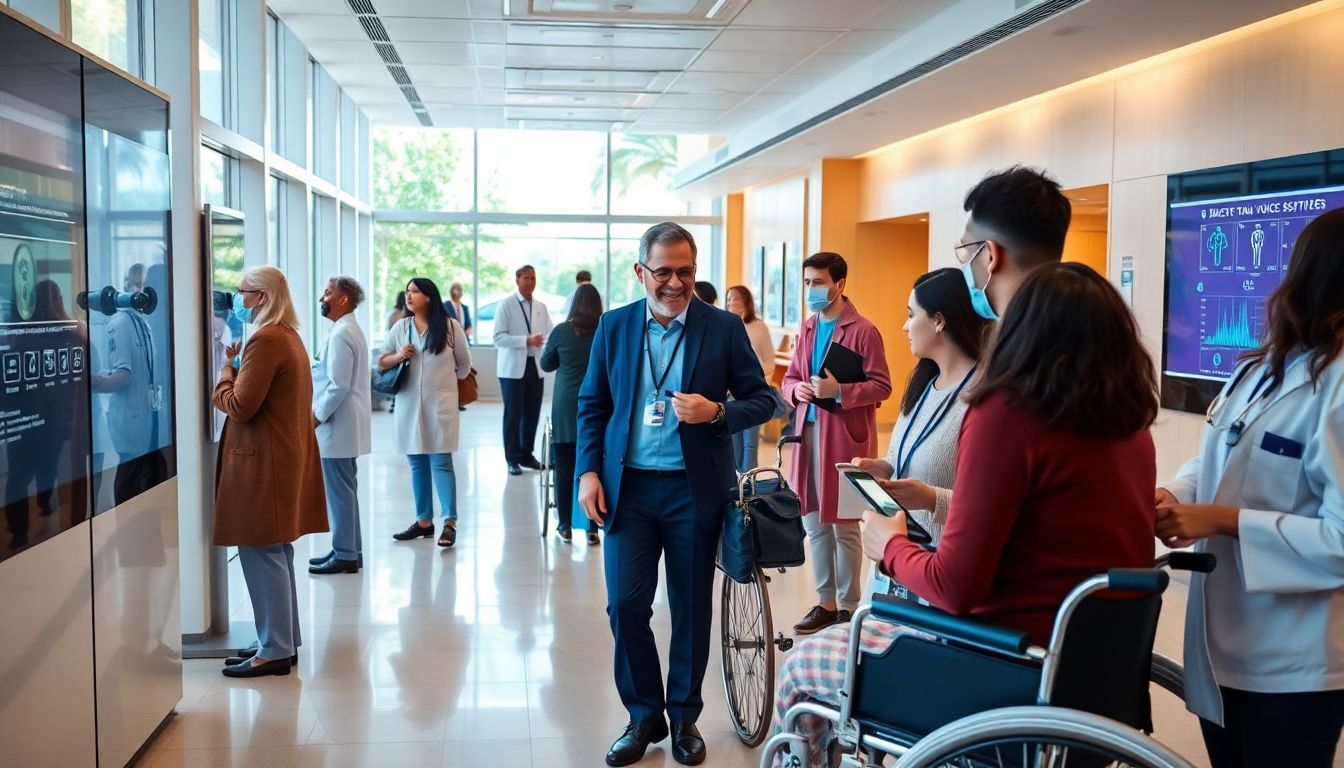How Voice Technology is Making Healthcare More Inclusive
Voice technology has quickly become a part of our daily lives in the last few years. Voice tools are everywhere, from telling Siri what the weather is like to telling Alexa to play music. They are changing how healthcare works now. It's more important than ever to make healthcare more open to everyone. Voice technology can help people who might have trouble in regular medical settings get the care they need. It opens new doors for communities that don't get enough help, making sure that everyone gets the care they need. This change isn't just for convenience; it's also for fairness and better health for everyone.

Voice technology has quickly become a part of our daily lives in the last few years. Voice tools are everywhere, from telling Siri what the weather is like to telling Alexa to play music. They are changing how healthcare works now. It's more important than ever to make healthcare more open to everyone.
Voice technology can help people who might have trouble in regular medical settings get the care they need. It opens new doors for communities that don't get enough help, making sure that everyone gets the care they need. This change isn't just for convenience; it's also for fairness and better health for everyone.
Also see: Brent Crude Oil Prices Dip Below $70 Amid Surprise Israel-Iran Ceasefire

How Voice Technology is Making Healthcare More Inclusive
Voice technology has come a long way because AI has gotten smarter. Alexa, Google Assistant, and Siri are just a few examples of devices that can do more than just play music or set reminders. They can help you talk about health issues, remind you to take your medicine, and even check your symptoms. These tools are no longer just simple commands; they are interactive platforms made for complicated healthcare tasks. As AI continues to improve, so does its ability to understand and respond accurately to diverse user needs.
Adoption Rates and Market Growth
Recent studies show that over 50% of healthcare providers have started using voice tech in some form. In the next few years, the market for voice-enabled healthcare is expected to reach billions. Hospitals and clinics think these tools can help them cut down on wait times and mistakes and improve patient care. As more healthcare providers invest in voice, it is likely that future growth will mean more people will be able to use it and use it better.
Benefits of Voice Integration in Healthcare
Most people agree that voice technology is very useful. It helps those with disabilities interact better with healthcare systems. For instance, older patients or those who have trouble moving can make appointments or ask questions without having to move around. Voice technology also makes both administrative and clinical work go faster. Healthcare workers spend less time filling out forms and more time taking care of patients. In general, it makes healthcare faster, easier, and more personal.
Improving Accessibility for Patients with Disabilities
Assisting Patients with Visual Impairments
People with visual impairments often struggle with navigating healthcare services. Voice commands fix that. Patients can manage their medication schedules or make follow-up appointments just by talking. Voice-enabled apps can read out medical instructions or appointment details. This makes healthcare more independent and less stressful for visually impaired patients.
University Of Ghana Confirms Resurgence In Covid-19 Cases
Supporting Patients with Mobility Challenges
Patients with mobility issues find it hard to use computers or touch screens. Voice tools allow them to complete forms or communicate with doctors without lifting a finger. For example, a wheelchair-bound person can ask their device health questions or update their health status hands-free. This boosts their independence and makes healthcare less frustrating.
Enhancing Communication for the Speech- and Hearing-Impaired
Speech-to-text and text-to-speech systems help those with speech or hearing challenges. Sign language recognition tech can translate gestures into spoken words, making immediate conversations possible. Auditory assistance devices help hearing-impaired patients understand spoken instructions during visits. Using these tools, healthcare providers can connect with all patients equally.
Reducing Language Barriers and Promoting Multilingual Care
Multilingual Voice Assistants
AI-powered voice assistants support many languages, even dialects. They can understand and respond in the native language of the patient. This reduces misunderstandings and builds trust. For multilingual communities, this technology makes healthcare clearer and more welcoming.
Real-World Applications
Some hospitals now use voice tools to communicate with non-English speakers. In one example, a clinic used voice tech to translate during patient interviews. This led to fewer errors and higher patient satisfaction. Patients reported understanding instructions better and following care plans more closely.
Actionable Tips for Providers
Healthcare providers should explore multilingual voice tools for their practices. Training staff to use these technologies will improve interactions with diverse populations. It’s also good to gather feedback from patients to refine language options and ensure the system truly bridges communication gaps.
Enhancing Patient Engagement and Self-Management
Personalized Voice Interactions
Voice assistants can deliver customized health advice. They remind patients to take medication, track symptoms, or set health goals. This personalized touch helps people stay on top of their health without feeling overwhelmed.
Empowering Patients
Voice tools allow patients to learn about their health and manage conditions independently. They can ask questions, get explanations, or even do simple health tests at home. These features motivate patients to stay engaged and stick with treatment plans.
Practical Recommendations
Healthcare systems should consider adding voice options to their patient portals. Encouraging patients to use voice-enabled apps makes them more likely to stay involved in their health. Clear instructions and easy-to-use interfaces are essential to success.
Safeguarding Privacy and Ensuring Ethical Use
Data Security Concerns
Voice data is sensitive. It’s crucial to protect patient information from hackers or misuse. Strong encryption and strict access controls are vital in keeping data safe. Regular security checks help catch vulnerabilities before they become problems.
Ethical Considerations
Patients should know what data is collected and how it’s used. Transparency builds trust. It’s also important to avoid biases—voice systems should work equally well for everyone, regardless of background or accent. Fair access must be a priority.
Tips for Healthcare Providers
Regularly update privacy policies and ensure they’re clear. Educate staff and patients about how voice data is protected. Building trust through transparency encourages wider acceptance of these new tools.
Conclusion
Voice technology is revolutionizing healthcare by making it more inclusive. It improves access for people with disabilities, breaks down language barriers, and boosts patient involvement in their own health. At the same time, securing data and practicing transparency are essential. Integrating voice tools into healthcare isn’t just about tech—it’s about creating a system where everyone can get better, fairer care. As this technology advances, it will continue to be a key driver toward a more equitable healthcare future.



 VARSHITHA
VARSHITHA